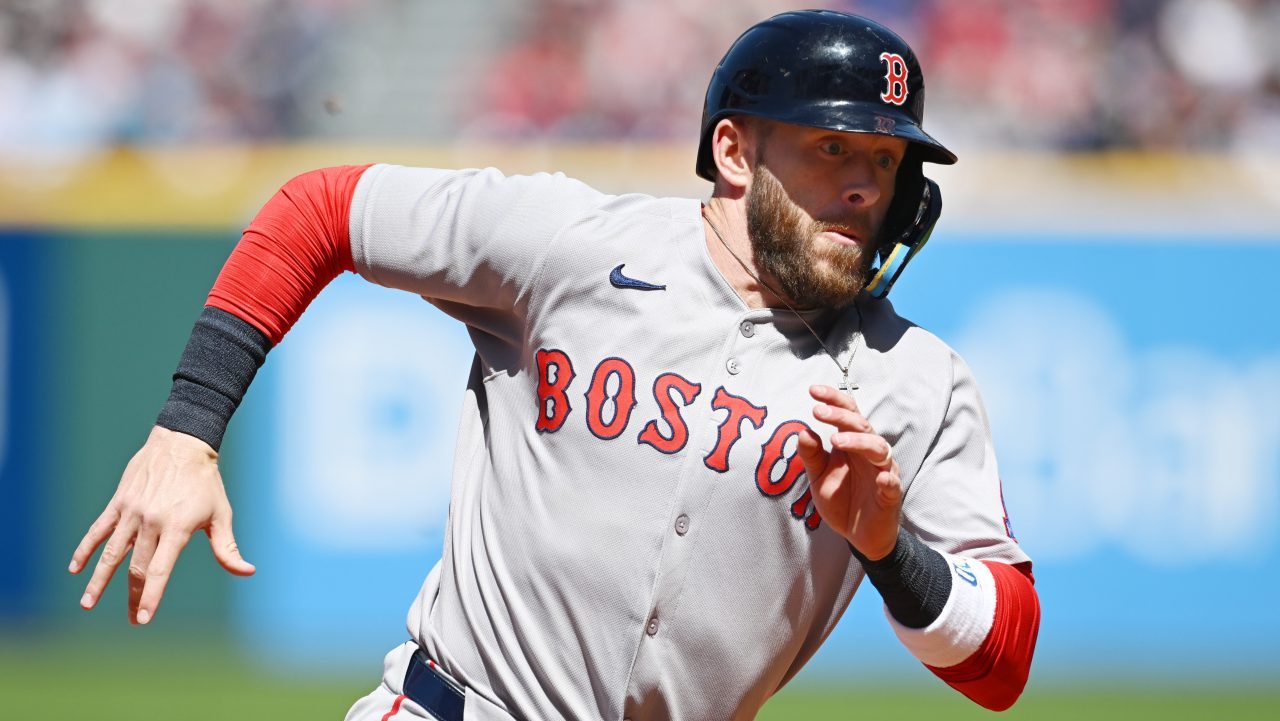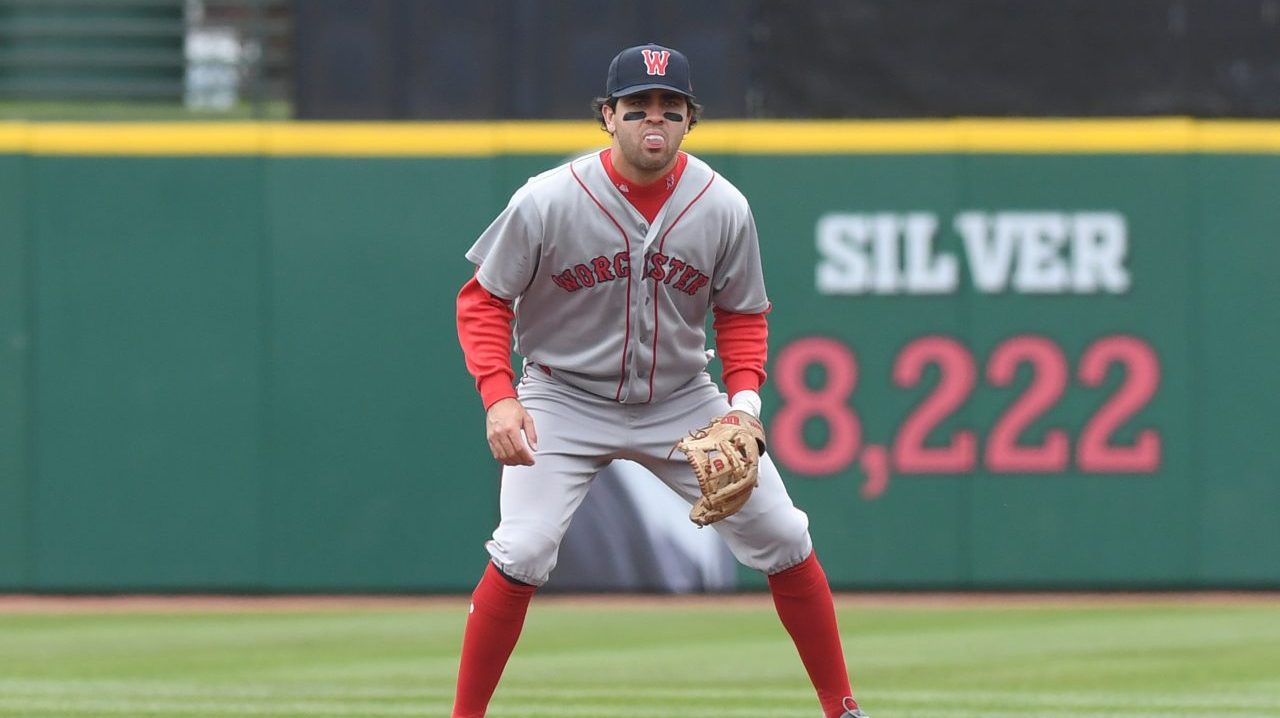BOSTON — To understand how David Price has put together an American-League best 1.09 ERA since the All-Star break, you probably have to begin with his mindset. One Red Sox person on Thursday noted the lefty’s environment: the support group around Price, and his improved state of mind compared to a year ago. That’s part one.
Part two, then, is made up of all the mechanical changes and physical adjustments and what he refers to, collectively, as “adjustments.” The list is long, and includes a move on the rubber, his return to the wind-up, and the interplay of his cutter and changeup.
“This is the pitcher Boston signed,” Price said Thursday. “So for me to get back to that, it’s about time.”
MORE
The easiest thing to notice from the numbers available at BrooksBaseball.net is the increased usage in his changeup. He threw it 11 percent of the time in April, and it’s climbed every month since, up to 27 percent of the time in August. Fittingly, he threw 27 changeups out of 101 pitches Thursday at Fenway, en route to eight innings of three-hit, shutout ball against the Indians. He fanned seven and walked none.
Price seemed to rededicate himself to the change (at least in a game setting) in a July 12 start against Toronto, his final start before the All-Star break. He threw it just eight times in a bad outing against the Royals on July 7. Against Toronto the next time out, he tossed a season-high 34.
Boston Red Sox
Find the latest Boston Red Sox news, highlights, analysis and more with NBC Sports Boston.
(Interestingly, Price said on WEEI this week that it was that July 7 start where he felt he turned the corner generally.)
Where had the changeup gone? The reason he used it less frequently prior to July may not have had anything to do with the changeup itself, actually.
A changeup usually has to work in concert with another pitch.
“Probably the evolution of the backdoor cutter,” pitching coach Dana LeVangie said Thursday said when asked why Price wasn't using the pitch as much. “Your ability to crisscross multiple movements to the arm side, always having the X-factor. And we saw it big time today. You [throw the] backdoor cutter, you throw a sinker off it. It works beyond … the cutter. Same thing with a changeup.
“Guys swing at it, before you know it, it’s in the other batter’s box. That’s what pitching is all about.”
Indeed, the cutter makes the changeup better. And he’s having better success executing to the arm side with both pitches because of where he now stands on the rubber. Price is starting his delivery farther toward first base than he did earlier in the season.
“The rubber part, it was something that he wanted to get back to,” LeVangie said. “Because whether it was deception, or the ability to command and dominate to the arm side … just making it a little bit easier, straight line, to get to that spot.”
Said Price on Thursday: “I feel like the thing it’s helped me the most with is my backdoor cutter. If I can continue to throw that pitch the way that I’ve thrown it, it makes everything that much better. Changeups, fastballs away. Threw a four-seam to Melky [Cabrera] in his second at-bat. Didn’t run away from him, and I still got the swing and I got it with two strikes. That’s pretty good off of that back-door cutter. That’s a staple that I had for a very long time, got away from it, and we’ve got it back now.”
Alex Speier of the Globe, Eno Sarris of The Athletic and Jonny Miller of WBZ previously noted the move on the mound.
“It looks like that cutter is starting from our dugout to the outside part of the plate and he's been really, really good about it,” manager Alex Cora said Thursday. “That's actually something we actually talked to Eduardo [Rodriguez] about the other day in Philadelphia, because it's kind of the same movement, same stuff. I think that pitch is becoming a weapon, and he can expand the other way with the changeup. They kind of like, don't recognize the pitch. So that's probably one of the biggest adjustments.”
But wait, there’s more.
Around the start of July is when Price returned to the wind-up. His stretch and his wind-up do not look dramatically different compared to other pitchers, but he nonetheless mostly lived out of the former.
“He’s probably done it for the last six starts or so,” LeVangie said of the wind-up. “Another something new. It gives him rhythm, timing. Gets him back in his delivery. That’s one of his keys. So he made some big-time adjustments that are paying off.”
Why move away from it in the first place? Price, for example, late in the 2016 season scrapped the wind-up, with the idea being he’d be more mechanically sound.
“It’s not that we got away from it,” LeVangie said. “We wanted to simplify things. Simplify movements. And the way things have gone, hitters have [it easier] timing up wind-up deliveries than they do necessarily stretches. So he wanted to have an influence, both with the big leg kick, side step, in always controlling their timing. Always disrupt their timing.”
Can’t forget his catcher, Sandy Leon, either. Price, like Chris Sale, does not attend the pre-start meeting with the coaches and the catchers, as most pitchers do. Even in the day and age of scouting reports, a relatively empty mind can help allow for focus on the pitch — particularly if the guy behind the plate has a supreme grasp on what to call.
“He puts in the work, he puts in the time,” Price said of Leon. “He now has enough time I feel like in the American League to know all these hitters. You know, he thinks back there. He doesn’t take his at-bats out to the field. He does a really good job.”


